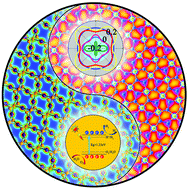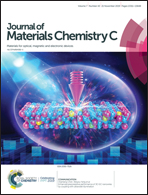The mechanical, electronic and optical properties of two-dimensional transition metal chalcogenides MX2 and M2X3 (M = Ni, Pd; X = S, Se, Te) with hexagonal and orthorhombic structures†
Abstract
In this paper, we perform first-principle studies on the mechanical, electronic and optical properties of two-dimensional transition metal chalcogenides MX2 and M2X3 where M = Ni or Pd and X = S, Se or Te. For MX2, besides the common hexagonal forms, it presents a stable orthorhombic structure with highly in-plane anisotropic properties and giant negative Poisson's ratios. For M2X3, on the other hand, it presents no hexagonal but another orthorhombic structure with highly anisotropic mechanical and electronic features. These orthorhombic MX2 and M2X3 are semiconducting with band gaps ranging from 1.05 to 2.40 eV, and they are hyperbolic materials operating in a broad range of the electromagnetic spectrum from infrared to ultraviolet. Moreover, by joint analysis of band gaps, band edges and optical absorption, Ni2Se3, Pd2S3 and orthorhombic MX2 are found to be highly efficient for solar-driven photocatalytic water splitting.



 Please wait while we load your content...
Please wait while we load your content...